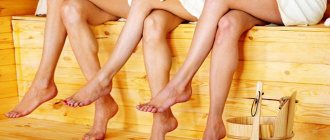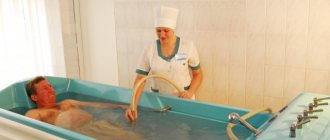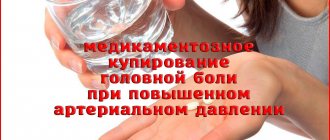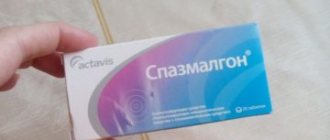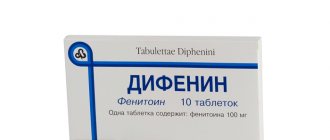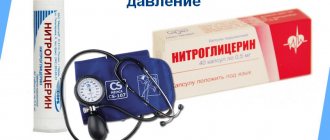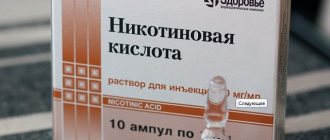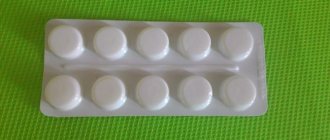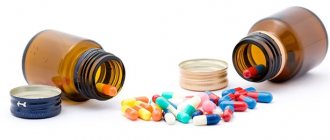High blood pressure negatively affects the human body.
Hypertension is treated with medication. Traditional medicine methods are also used.
Many patients ask whether it is possible to warm their feet under pressure and how hot water affects the patient’s condition. The answers are given in the article.
The effect of hot foot baths on the body
The hypotensive effect of hot foot baths is explained by the fact that warm water helps to dilate blood vessels, which, with high blood pressure, are narrowed and in a state of spasm. Blood begins to circulate freely in the lower extremities, and the load on the heart muscle decreases.
Soaring your legs stimulates the following changes in the cardiovascular system:
- blood circulation in the kidneys, brain and liver improves;
- the rest interval of the heart muscle increases;
- the resistance of the vascular walls decreases;
- pulse rate normalizes;
- vascular blood flow improves;
- the amount of blood pushed by the left ventricle increases;
- the return of blood to the right lobe of the heart muscle is normalized.
Foot baths strengthen the immune system. This is explained by the fact that hot water affects biologically active points that are located on the foot and are responsible for the functioning of internal organs.
Warm water activates the functioning of the endocrine glands, which is a good prevention of diabetes. By normalizing blood circulation, the condition of the skin improves.
Contrast shower is a guarantee of health
Let's start with a contrast shower. This procedure stimulates the immune system, strengthens the vascular wall, trains the circulatory system, increases metabolic rate, promoting weight loss. You can only start it after consulting a doctor. Not all hypertensive patients have the disease at the same stage and are not accompanied by additional ailments. Contrast showers are contraindicated:
- people with thrombosis of peripheral and deep veins;
- when hypertension is combined with coronary heart disease, defects;
- at stage 3 of hypertension, in the presence of complications in the form of heart failure and the like.
In order not to harm your health, you need to know how to properly take a contrast shower for hypertension. You should start training gradually, patiently adhering to the schedule every day; you should not take on increased obligations and try to quickly increase the difference in temperature. Under no circumstances should you stop training, even if you have a cold. Smoothness, persistence, gradualness - three pillars that will improve your health. The procedure is carried out in cycles lasting no more than 5 seconds:
- warm water;
- hot water;
- water 30 degrees;
- water 45 degrees.
Gradually, the temperature of the water must be changed, aiming for the cold to reach 20º, the hot shower to 55º, and the time intervals to be increased, bringing them to a minute in each temperature mode.
Only in everything you need patience and moderation, otherwise, instead of benefit, irreparable damage will be caused to your health. After each such vascular training, you need to lie down and give the body a rest.
Is it possible to warm your feet with high blood pressure?
Even in ancient times, healers reduced high blood pressure with hot baths. This popular method helps quickly. For its high efficiency it was called an “ambulance”. Hot water reduces blood pressure gently, without the risk of complications.
But warming up has many contraindications, which are useful to familiarize yourself with before starting the procedure. So experts prohibit foot baths for:
- pregnancy. There is a risk of miscarriage;
- menses. Increased bleeding and health problems may occur;
- varicose veins. Often the veins are affected in the legs. And during soaring, blood flow to the extremities increases. As a result, the disease progresses;
- high body temperature (more than 38 degrees). There is a possibility of an even greater increase;
- children under 4 years old;
- acute myocardial infarction;
- skin diseases of the lower extremities (wounds, cuts);
- actively developing tuberculosis;
- hypertension of the third stage, in which the blood circulation of the heart and brain is impaired;
- benign, malignant neoplasms on the legs.
Official medicine does not recommend leg steaming for people with cardiovascular disorders. This is explained by the fact that warming up speeds up the heart rate. Traditional medicine claims that hot baths are the best option to relieve unpleasant symptoms during a hypertensive crisis. After all, when the blood moves from the head to the extremities, the patient feels better.
Stopping an attack at home
There are many ways to relieve high blood pressure before doctors arrive. One of these is to hover your legs with high blood pressure. With pressure, the patient's vascular tone narrows, so immersing the legs in hot water leads to the expansion of peripheral blood capillaries. In this way, the blood is “diverted” from the upper part of the body to the lower part - this reduces the pressure and the person feels better. When a patient's blood pressure rises, he shudders. To warm such a patient, you need to cover him with a blanket, but not wrap him up, and put a heating pad or a plastic bottle with warm water under his feet.
The method described above is used for short-term pressure surges caused by stress or fatigue and not associated with the underlying disease.
In hypertension, this increase is longer lasting. In addition to foot baths, you need to take an antihypertensive medication tablet. It is not drunk immediately, but divided into parts, each of which is taken after 30 minutes (placed under the tongue and dissolved). This should be done under blood pressure control, and if the first dose helped, then you don’t need to finish the pill so as not to lower your blood pressure below normal.
If there are no antihypertensive tablets, then if you have high blood pressure, you can put mustard plasters on your calves. This, together with foot baths, will help increase blood flow from the heart to the feet. Such baths help with severe headaches and migraines.
How to properly soar your legs with hypertension?
People often hover their feet incorrectly. Because of which new health problems appear.
Recommendations regarding taking baths are given below:
- You should not eat before the procedure;
- the water temperature should not exceed +40 degrees;
- It would be a good idea to add essential oils to the water. This will have not only a therapeutic, but also a cosmetic effect;
- limbs should be immersed in water up to the knee;
- every four minutes you need to add a jug of boiling water to maintain the optimal temperature;
- Keep your feet in a container of hot water for no longer than 15 minutes. But if your health worsens during the process, you should end the procedure immediately;
- while vaping, you are allowed to drink mineral water;
- After the bath you must lie down;
- After therapy, you need to wipe your feet dry with a terry towel and put on warm socks. This will help keep you warm;
- after steaming, do not take a shower or rinse your limbs under running water;
- After vaping, it is not recommended to go outside for about 3 hours.
It is not possible to completely get rid of pathological vasospasm by regularly steaming your legs. But you can prevent the development of a hypertensive crisis and significantly improve your well-being.
There are different types of foot baths. The specific option is selected individually, taking into account the characteristics of the body and the patient’s health status.
Hypertension and water procedures
Soaking your legs according to pressure indications is one thing, but taking hot baths is quite another. They are not recommended. If you are used to soaking in very hot water with foam or bath balls, going to a bathhouse or visiting a sauna, you should think 10 times if you develop stage II–III hypertension. This disease at this stage is a contraindication to long-term thermal procedures.
Take a warm bath at home. Add medicinal plants that have a positive effect on the nervous and vascular system. Fill the bath correctly (water should not flood the heart area when you immerse yourself in the container). And even your hypertension will soften its manifestations.
A good way to train these systems is a contrast shower. With constant and correct use of this procedure, you will not only be able to fight vascular diseases, but will strengthen your body.
After a few years of using a contrast shower, you will forget about colds, and you won’t even need to steam your feet.
Coniferous baths
Baths with the addition of pine needles have a beneficial effect on the functioning of the heart. High temperatures cause blood vessels to dilate. Essential oils penetrate the body through the skin and have a positive effect on the central nervous system. A pronounced calming effect is noted.
The recipe for making a pine foot bath is given below:
- heat the water to +36 degrees;
- add three tablets of pine concentrate. It is also allowed to use the product in liquid form, taking into account the proportion of 10 ml of medication per liter of water;
- stir thoroughly.
To dissolve the concentrate better, you should first dilute it in a small amount of hot water.
You should steam your feet for no longer than 10 minutes. The procedures are carried out every other day. The course of treatment is a month.
Some use fresh, just harvested raw materials. It is believed to be more effective.
Types of foot baths
Foot baths are a kind of salvation from attacks of high blood pressure. In addition, these procedures serve as a prophylactic against hypertension and can be freely included in the complex of therapy in the treatment of hypertension. A hot bath for the lower extremities does not increase blood pressure. By increasing the clearance between the walls of arteries and veins, the procedure lowers blood pressure.
There are several main types of foot baths:
- A therapeutic bath involves adding various medicines to the water. It could be pine needles or mustard. That is, any substance that helps relax the walls of peripheral capillaries.
- A simple procedure involves using fresh water without unnecessary additives.
- Gas bathing involves adding oxygen, carbon dioxide or nitrogen to water.
- Mineral baths are different in that instead of ordinary fresh water, the feet are immersed in mineral water. This can be a sea, hydrogen sulfide, sodium chloride, radon or iodine-bromine bath.
Several subtypes of foot bathing procedures and detailed instructions for their preparation will be described below.
Mustard water treatments
Fill a container with 7 liters of warm water (temperature no more than 40°C). Dissolve 350 g of dry mustard in it.
Place your feet in the container. They need to be covered with a small blanket on top so that the healing vapors do not disperse throughout the room, but act on a specific area. We keep our feet in the bath for about 20 minutes, then rinse our limbs with warm water, wipe them dry and put on woolen socks.
Steaming your feet in mustard, in addition to reducing blood pressure and having a warming effect, stops possible fungal infections or suppuration. Regular use of such procedures improves blood flow to all internal organs, saturating them with oxygen and nutrients. Spasms of arterial walls are reduced, smooth muscle tissue becomes toned.
Important: in case of hypertensive crisis, a mustard bath is the first remedy. It effectively stops the manifestations of an attack and helps relieve its symptoms before the doctor arrives.
Pine baths
We heat 5 liters of water to normal human body temperature – 36o C. Add 2.5 tbsp to the basin. l. liquid pine concentrate or several dry tablets. When using the latter, it is recommended to first dissolve it in a small amount of hot water. You can also use a decoction of freshly collected needles or young cones of cedar, pine, spruce or sequoia for a bath.
We immerse our feet in a prepared container of water; the procedure time should not exceed 10 minutes. To consolidate the result, it is recommended to perform 10-15 such procedures with a break of 2-3 days.
In addition to reducing blood pressure, essential oils of pine needles have a sedative effect on the central nervous system.
Sodium chloride or salt baths
Dissolve 400 g of sea or regular table salt in 10 liters of any mineral water at a temperature of 40 ° C. Salt ions, without being absorbed into the skin, form a kind of protective layer on its surface that promotes long-term effects on the necessary receptors.
Immerse your feet in the container for about 10 minutes. After the procedure, it is not recommended to rinse your feet to enhance the effect. The course of therapy is 10 sessions with an interval of 2 days.
Salt procedures increase immunity, strengthen the walls of peripheral capillaries and make them more elastic.
Iodine-bromine baths
In 2 liters of warm water (approximately 37o C) dissolve 200 g of sodium iodide, 500 g of potassium bromide and 60 g of table or sea salt. The amount of water can be increased or decreased, but do not forget about the proportions.
Immerse your feet in the bath for 10 - 15 minutes. The full course of treatment should be at least 15 procedures daily.
Iodine ions, when released into the system, improve blood flow. Having reached the cerebral cortex, the substance stops and inhibits excessive excitation, providing a calming effect. Bromine has almost the same effect, which, in addition to its sedative effect, also relaxes when exposed to heat.
Gaufe
This type of water procedures consists of gradually warming up the feet with a gradual increase in the temperature of the liquid. This is usually done in a clinical setting.
We place the legs and arms in separate containers with water at a temperature of 37°C. We cover the patient's entire body with a blanket or blanket. From time to time, over a period of 15-20 minutes, add hot water to the container so that the temperature in them gradually increases from 37 to 42o C. After the water in the baths has heated to the required level, maintain its temperature for 10-15 minutes. After the bath, you definitely need to lie down for half an hour, covered with a sheet or blanket, after which you can return to your usual way of life.
Discovered by the German scientist Gaufe, this water procedure improves blood supply to the myocardium and other internal organs, rapidly reducing blood pressure. Gaufe baths are done daily, the full course is 10 – 15 procedures.
Hydrogen sulfide water procedures
This procedure is usually done in a clinical setting using special equipment. The temperature of the liquid is adjusted by specialists. The concentration of the active substance should not exceed 25 mg per liter of water.
The lower limbs are immersed in a container with therapeutic liquid for 10 minutes. The full course of treatment includes 10 procedures with a range of 2 days.
H2S (hydrogen sulfide) helps improve lymph flow to organs, as well as accelerate and stabilize metabolic processes.
You can learn a little more about hydrogen sulfide baths in the video:
Mustard baths
Gently but quickly reduce the high pressure of the bath with the addition of mustard powder.
Their action is based on the fact that the outflow of blood to the legs is accelerated. They have a warming and local irritating effect. They exhibit antiseptic properties. Mustard baths give good results against fungal and bacterial infections.
With regular use, blood flow to internal organs is normalized, spasms of smooth muscles and vascular walls disappear.
Mustard baths are indicated for hypertensive crisis. Traditional healers consider them the first means of first aid.
To prepare a foot bath with mustard powder, you need to heat the water to +40 degrees. Dissolve mustard powder in it, based on the proportion of 50 grams of product per liter of water. The feet are dipped into a container with the solution and covered with a terry towel or blanket.
This is done to avoid inhaling caustic fumes. The procedure takes no longer than 20 minutes. When finished, rinse your feet with warm water and wipe dry.
Rules for the procedure
If, during signs of a hypertensive crisis, a person is given a basin of hot water, a redistribution of blood flow will occur. The vessels will expand and blood from the heart muscle will go to the lower part, that is, to the legs. Timely assistance can gently and without consequences reduce high blood pressure. The main thing is not to overdo it in carrying out such procedures. It is worth remembering that baths should last no more than 15 minutes. If there is a deterioration in the condition during the procedure, then it must be interrupted immediately.
Gaufe bath
The Gaufe bath is used to improve blood supply to the limbs and heart muscle.
Promotes a rapid decrease in tonometer readings.
The essence of the procedure is that the legs and arms are slowly warmed up, gradually increasing the temperature of the liquid.
For a Gaufe bath, take two basins with water heated to +37 degrees. The patient's hands are placed in one container, and the patient's legs are placed in the second.
The patient's body is covered with a blanket. Water is gradually added, increasing its temperature by one degree every 2.5 minutes.
When +42 degrees is reached, the temperature is maintained at this level for another quarter of an hour. It is useful to do such warming baths for 10 days.
Is a bath or shower acceptable?
The question of whether it is possible to take a bath or shower with high blood pressure is quite common among people suffering from disorders of the cardiovascular system.
If your pressure often fluctuates, be as careful as possible when handling hot water. When a body is immersed in hot water, the heat surrounding it increases blood circulation and increases the pulse. In a person with hypertension, this course of events can provoke a hypertensive crisis. Hypertensive patients can take relaxing baths with warm water . You can add essential oils or healing herbal infusions.
In sanatoriums and medical institutions, a hydrogen sulfide bath is often used for therapy. This colorless gas helps improve metabolism without harming the circulatory system.
Freshwater baths go very well with fragmented hydromassage (used only for certain areas of the body). This therapy helps relieve pain and improve blood circulation in specific organs.
The mineral bath has a sedative effect on the body and normalizes the heartbeat during tachycardia.
Attention: it is forbidden to immerse yourself in the bath on a full stomach or after recently experiencing stress.
The duration of the treatment procedure is a maximum of half an hour. After bathing, the patient is recommended to take a short rest to recuperate.
How to take a bath properly
If the tonometer readings are high, you can take two types of baths.
Namely:
- Recumbent baths involve immersing the body in water up to the chin. The legs should be stretched and the whole body relaxed. The benefits of such procedures are the normalization of respiratory processes, complete relaxation of the body and limbs, improvement of blood flow, and elimination of pain syndromes. If you have a headache, you can place a cool compress, such as a towel soaked in cold water, on your forehead during the procedure. This will help relieve pain in the frontal and temporal parts of the head, and the capillaries will not experience a sharp temperature change. If you feel weak or unwell while swimming, make the water cooler. When adding cold liquid to the bath, remember not to pour it on your body.
- A sitz bath involves bathing only your feet. This approach widens the arteries, increases blood flow to the legs and prevents blood clots. Foot baths reduce blood pressure readings to normal and prevent changes in blood pressure. Before taking such procedures, you should consult a doctor about possible contraindications.
Hypertension of degrees 1 and 2 is not a contraindication for taking baths. The main thing is not to self-medicate. The type of therapeutic bath is determined by the doctor, looking at the patient’s medical history.
Is it possible to shower?
The procedure of being under streams of water involves short-term and “targeted” bathing. The benefits of hot showers for people with high blood pressure are worth understanding. As you know, cold water constricts blood vessels, thereby increasing the resistance of lymph to the walls of blood vessels. Therefore, cold showers are contraindicated for grade 1 and 2 hypertensive patients. Hot water promotes the dilation of veins and arteries, but at the same time it entails an increase in the load on the heart muscle and other organs. And not every body can cope with this, especially if it is weakened.
Consequently, a hot shower can reduce blood pressure, and a cold shower, on the contrary, can increase it. However, for hypertension, neither one nor the other type of water procedures is useful. The best option for a high pressure shower is warm water.
Hydromassage of the occipital region and neck with warm and hot water or a foot bath will help reduce the tonometer readings to a normal level.
As for the contrast shower, it is certainly useful for healing and hardening, but only in conditions of a healthy body. The procedure affects myocardial function and vascular condition. A sharp change in temperature increases blood flow, and the lymph is better saturated with oxygen. But with hypertension, this approach can cause fluctuations in blood pressure and worsen the patient’s condition. How to take a contrast shower correctly and is it worth doing if you have hypertension?
The procedure will help strengthen the immune system and normalize blood resistance if you follow a number of rules:
- Before swimming, you need to calm down and take your mind off pressing problems.
- You need to start the procedure with warm water, gradually increasing its temperature.
- When the water becomes very hot, you need to stay under it for no longer than 30 seconds, and then sharply reduce the temperature to cold.
- The number of procedures should not exceed 4 per week. Only after a month can you gradually increase the frequency of taking a contrast shower.
- When taking such a shower, you only need to pour over the body, bypassing the head.
- During the procedure, you should stretch your legs a little. This will evenly distribute the healing effects of water on both limbs.
Important: for a hypertensive person, a contrast shower can have a variety of consequences, so it would not be superfluous to consult a doctor.
Sodium chloride
Sodium chloride foot baths also help reduce blood pressure. The effectiveness of the procedure largely depends on the concentration of potassium and chlorine ions in the water.
The amount of active components is selected individually for each person based on health data.
Sea salt baths are beneficial for hypertension patients
Chlorine and potassium ions are not absorbed into the human body. They cover the skin and form a protective salt layer, which provides prolonged irritation of the receptor apparatus, which leads to a decrease in the tonometer numbers.
In addition to normalizing blood pressure, chloride baths improve the body's resistance to infections, increase the elasticity of blood vessels and make their walls stronger.
To prepare such a bath, you need to take sea (table) salt and dissolve it in mineral water heated to +40 degrees. For 5 liters of liquid, 200 grams of salt are required. Keep your feet in this solution for no longer than 10 minutes. After warming up, rinsing your limbs with running water is not recommended. The procedure must be carried out every two days for three weeks.
be careful
There are a number of conditions during which the use of foot baths is not recommended, as this can lead to serious consequences. This is because there is a high risk of increased blood circulation.
Pregnant women are allowed to do such foot baths only in warm water. High water temperature dilates the vessels of the uterus, which can cause it to contract. In very early stages of pregnancy, this can result in miscarriage, and in later stages, premature labor can begin.
For varicose veins, procedures with hot water are also not recommended. The blood vessels dilate, which leads to a deterioration in the patient’s well-being. If your body temperature is high, it is prohibited to hover your feet. This can cause a sharp rise in temperature. During menstruation, it is also advised to refrain from such procedures. Vasodilation can cause severe bleeding.
Doctors do not recommend hot foot baths for the following diseases and conditions:
- Serious heart diseases - in particular, the consequences of the manifestation of cardiovascular accidents (heart attack or stroke, angina attacks, atherosclerosis, heart failure);
- Oncology;
- Tuberculosis;
- Blood clotting disorders; skin diseases (psoriasis, dermatitis, skin ulcers).
- It is forbidden to give baths to children under four years of age.
Despite all the positive effects that foot baths provide, there should be a sense of proportion in everything, especially for those who have chronic diseases. When taking hot baths, contrast showers or baths, a person with high blood pressure must adhere to the rules so that water does not turn from beneficial into harmful.
It is imperative to follow all the doctor’s recommendations, monitor SBP and DBP, and systematically take appropriate medications. And only after that use folk remedies.
Iodine-bromine
Iodine ions, entering the blood, improve its fluidity. When iodine reaches the cerebral cortex, it stops the processes of excitation and produces a sedative effect.
Bromine also has a calming effect. Under the influence of high temperature, it relaxes the walls of blood vessels.
To prepare an iodide-bromine foot bath, you need to dissolve sodium iodide in water, maintaining the proportion of 100 grams of the substance per liter of liquid. Add potassium bromide at the rate of 250 grams of product per liter of water.
Also dissolve 30 grams of sea or table salt. Heat the water to +37 degrees. Bath time is from 10 to 15 minutes. The duration of treatment is two weeks.
Hydrogen sulfide
Hydrogen sulfide baths are often carried out at resorts in Pyatigorsk and Sochi.
The procedure accelerates metabolism, improves peripheral circulation and tissue respiration.
The water temperature is selected individually for each patient. The hydrogen sulfide concentration should not be less than 25 mt/l. Baths are done every other day for 10 days. Warm-up time is 10 minutes.
With increased excitability of the autonomic nervous system, hydrogen sulfide baths can cause increased heart rate and increased blood pressure.
Video on the topic
How to lower blood pressure at home without pills:
Thus, warming the legs during a hypertensive crisis allows you to gently and effectively lower the high numbers of the tonometer. There are a large number of different baths: coniferous, hydrogen sulfide, Gaufe. A specific type is selected for each patient individually.
It is important to consider that water procedures have a number of contraindications. And you need to know about them so as not to further worsen the patient’s condition. Hot foot baths are indicated as a therapeutic procedure only in the initial stages of hypertension.
Contraindications
Foot baths are a good way to combat viral infections and high blood pressure, especially when urgent help is needed. However, you need to know that this type of procedure is contraindicated in some cases and can be harmful to health.
So, you can’t steam your feet with hot water if your body temperature has risen! Foot baths will further dilate the blood vessels, which will worsen the situation. In this case, you need to wait until the fever subsides on its own or take an antipyretic drug.
